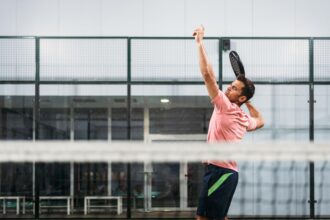Whether you’re a professional athlete or a weekend warrior, maintaining peak physical fitness is key to enhancing performance, preventing injuries, and ensuring long-term health. Athletes push their bodies to the limit, requiring specialized training and recovery strategies. Here are some essential fitness tips for athletes looking to stay at the top of their game, improve endurance, and reduce the risk of injury.
1. Prioritize a Well-Balanced Diet
Nutrition plays a crucial role in an athlete’s performance and recovery. To fuel intense training sessions and support muscle recovery, athletes must focus on a well-balanced diet that includes:
Carbohydrates for energy: Whole grains, fruits, and vegetables provide sustained energy for long training sessions and high-intensity workouts.
Proteins for muscle repair: Lean meats, eggs, fish, beans, and tofu help in muscle recovery and growth after workouts.
Healthy fats for endurance: Avocados, nuts, seeds, and olive oil contribute to prolonged energy levels, especially during endurance events.
Vitamins and minerals for recovery: Ensure you’re getting enough vitamin C, potassium, and magnesium to reduce muscle cramps and support overall health.
Proper hydration is just as important as diet. Dehydration can lead to muscle fatigue, cramps, and poor performance. Drinking water throughout the day, along with sports drinks that replenish electrolytes during intense exercise, ensures optimal hydration.
2. Build a Comprehensive Strength Training Routine
Strength training is essential for improving athletic performance across all sports. It not only builds muscle but also increases joint stability and reduces the risk of injury. Key areas for athletes to focus on include:
Core exercises: A strong core is vital for stability and balance. Incorporate exercises like planks, Russian twists, and dead bugs to build core strength.
Leg workouts: Lower body strength is crucial for explosive power in many sports. Squats, lunges, and leg presses can improve speed, agility, and endurance.
Upper body strength: Strengthening the arms, chest, and shoulders can enhance overall athletic performance. Push-ups, pull-ups, and overhead presses are effective choices.
Athletes should aim to train each muscle group 2-3 times per week, focusing on both compound and isolation exercises. A periodized strength training plan that includes varying intensity and volume will yield better results over time.
3. Incorporate Flexibility and Mobility Training
Improved flexibility and mobility allow athletes to perform at their best while reducing the risk of injuries. Stretching helps maintain a healthy range of motion in the joints, while mobility exercises improve movement efficiency.
Dynamic stretching before workouts (e.g., leg swings, arm circles) prepares the muscles for activity by increasing blood flow and flexibility.
Static stretching after training (e.g., hamstring stretches, shoulder stretches) helps to lengthen the muscles and improve flexibility.
Foam rolling or using a lacrosse ball to release muscle tightness can also prevent muscle imbalances and speed up recovery.
Athletes should also include mobility drills such as hip rotations and ankle circles to maintain joint health. Incorporating yoga or Pilates into your weekly routine can improve both flexibility and mental focus.
4. Optimize Recovery Strategies
Recovery is where the real improvements in performance happen. Intense training breaks down muscle fibers, and recovery allows them to repair and grow stronger. Here are a few strategies for effective recovery:
Rest and sleep: Athletes often underestimate the power of sleep, yet it’s when the body heals and regenerates. Aim for at least 7-9 hours of quality sleep each night to maximize recovery.
Active recovery: Light exercises such as walking, swimming, or cycling help improve circulation, aiding the body in removing toxins and reducing muscle soreness.
Cold and heat therapy: Ice baths or cold showers reduce inflammation and muscle soreness after intense workouts. Heat therapy (such as using a sauna or warm compresses) promotes muscle relaxation and flexibility.
Massage therapy and stretching: Regular massages help reduce muscle tension and improve blood flow to fatigued muscles, accelerating recovery.
Incorporating rest days into your weekly training schedule is essential to prevent overtraining, which can lead to burnout and injury.
5. Develop Mental Resilience
Mental toughness is often the differentiator between average and elite athletes. Building a strong mindset can help athletes push through tough training sessions, perform under pressure, and maintain motivation during recovery. Here are some tips:
Visualization: Visualize successful performance and envision yourself achieving your goals. This mental rehearsal can improve focus and reduce anxiety.
Goal setting: Set short-term, achievable goals to maintain motivation and track progress. Break down long-term goals into smaller milestones.
Mindfulness and relaxation: Techniques like deep breathing, meditation, and mindfulness can reduce stress and enhance concentration, especially during high-stakes competitions.
6. Sport-Specific Conditioning
Each sport requires unique skills, and athletes should tailor their training to meet the specific demands of their discipline. Whether you’re a sprinter, a basketball player, or a swimmer, sport-specific conditioning improves performance and reduces injury risk.
Endurance athletes (e.g., runners, cyclists) should focus on cardiovascular fitness, interval training, and long-distance conditioning.
Power-based sports (e.g., football, rugby) benefit from explosive exercises like plyometrics, sprints, and resistance training to improve strength and agility.
Team sports (e.g., soccer, basketball) require a combination of aerobic fitness, speed, strength, and agility training.
Conclusion
For athletes, fitness is a multifaceted approach involving proper nutrition, strength training, flexibility, mental resilience, and recovery strategies. Consistency in these areas is key to improving performance, reducing injuries, and achieving long-term success. By following these fitness tips, athletes can maximize their potential and stay at the peak of their physical abilities, both in training and competition.







